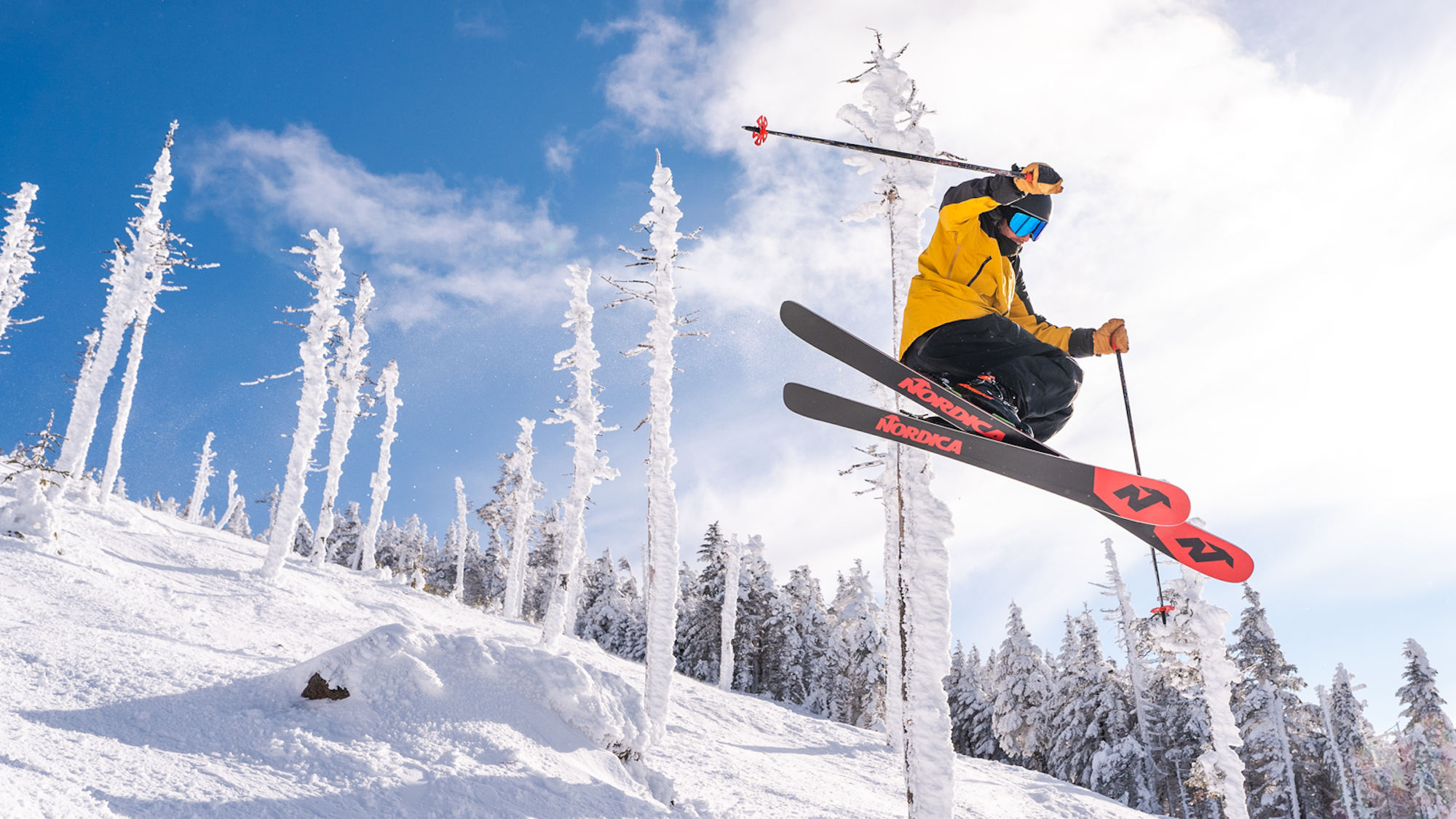WORDS — Connor W. Davis
I won’t lie. When I heard the news, I was skeptical. A shut-down ski area in the backwoods of Maine, rising from the ashes in the age of conglomerations and mega-passes? Good luck, I thought. And may the skiers have mercy on your soul.
I didn’t know much about Saddleback. But, having just moved to Maine, I started doing some research. It was founded back in 1960 and saw tremendous success in spurts, but changed ownership more times than you can count on a hand. The most recent shut-down started in 2015—leaving Saddleback desolated and its many workers in a tough spot. But, in 2020, an Impact Fund heroically bought the place up. (If you’re wondering what an Impact Fund is, we’ll get to that later.)
Outside of my research, I started casually hearing about Saddleback more than I expected. Coworkers in Portland told me how magical it is—rising above Rangeley Lake in all its perfect, wintery glory. New friends reflected on the good old days when they learned to ski at a place untouched by mega-resort culture. Above all, no one would shut up about the Casablanca Glades. The Casablanca Glades this. The Casablanca Glades that. Try to ask someone about Saddleback without hearing about the Casablanca Glades. It’s literally impossible.
Clearly, there was something—or a lot of things—special about Saddleback. And I started to think that maybe my skepticism about its revival was rooted in jaded, skier-bro nothingness. So I kept my eye on the place, just in case. And sure enough, the lifts started spinning again. And the charming stories kept coming. And no one shut up about the Casablanca Glades. Enough was enough. And on a particularly snowy Wednesday, I took off work and hit the road to see what in Maine’s name was going on.
When people think of Maine—also known as Vacationland—they think of lobster rolls and lighthouses and sunset-colored polo shirts tucked into snow-white shorts held up by belts covered in whales. And having been in Maine for two-and-a-half years now, I can confirm those things are quite literally everywhere you look—but only in the summer. In the winter, you go north, away from the coast and find yourself in one of America’s most serene settings. It’s the most forested state in the nation, after all, which makes complete sense as you weave up the curving road toward Saddleback. And as you climb toward the highest base area in the East—with sweeping views of Rangeley Lake—the hype becomes very real, very quick.
Waiting in the parking lot was my pal, Adrian. We met skiing out west and moved to Maine around the same time. The thing is, I’m originally from Vermont, and he’s a Maine native who skied Saddleback as a kid. Who better than him to explore this East Coast revival with. We made it to the lift just in time for opening—with a small and stoked crowd—and headed for Casablanca immediately. I heard it’s great up there.


SKIER: Brooks Curran
PHOTO: Andy Gagne
LOCATION: Saddleback Mountain, ME
Upon reaching the summit (one of the East’s highest ski areas at over 4,000 feet), Adrian and I traversed across the top of the glades, where we took our pick from a number of chutes. West Coasters know chutes as rock-walled hallways, but East Coasters know them simply as hand-cut tree zones on steep terrain. And no matter what coast you call home, trust me, these Casablanca chutes are the real deal. Flying between the trees with your buddy—feeling absolutely psyched, and knowing damn well how psyched he is, too—it’s a hell of a feeling. And Adrian and I experienced that for no less than 10 laps up there at Casablanca. Whatever skepticism I had, rooted in absolutely nothing, was gone with the wind in backwoods Maine. Saddleback had proved to be the real deal, and living in Maine had become a whole lot sweeter.
After a brief parking lot lunch—eating brats and pasta salad on a picnic blanket—we spent the afternoon bopping around groomers on the main mountain and basically just going as fast as humanly possible. One run stood out among the rest, and its name is Professor. The upper section has some technical terrain with a couple of small cliff drops, and the lower section is narrow, winding, and akin to a bobsled course. Case in point: If you ski Saddleback, ski Professor and thank me later.
There’s a lot I didn’t experience during my visit. The renovated base lodge, for starters, was calling my name but in the pre-vaccine ages, I unhappily stayed away. Another gotta-do-it item for this season is Saddleback’s skin track. Unlike most resorts who make you go up a busy trail—if they even allow skinning—Saddleback cut a designated skin track that weaves through the enchanting woods, just like a hiking trail. And as a father with a soon-to-be-skiing daughter, Saddleback’s new magic carpet is sounding right up my alley these days, too.
Oh, and remember that whole Impact Fund thing I left hanging earlier? If you’re like me and don’t know what that is, I’ll just let Saddleback describe it: “Being owned by an Impact Fund, our mission goes beyond changing the financial trajectory of the mountain. Our responsibility includes helping the region solve some of the challenges facing every rural community: affordable housing, affordable childcare, workforce development and transportation. We have also convened task forces to develop strategies for getting seasonal workers year-round benefits, which doesn’t exist anywhere in the country, and to increase access to health and wellness care in rural communities.”
No further skepticism. I love Saddleback.



![[GIVEAWAY] Win a Head-to-Toe Ski Setup from IFSA](https://www.datocms-assets.com/163516/1765920344-ifsa.jpg?w=200&h=200&fit=crop)


![[GIVEAWAY] Win a Legendary Ski Trip with Icelantic's Road to the Rocks](https://www.datocms-assets.com/163516/1765233064-r2r26_freeskier_leaderboard1.jpg?auto=format&w=400&h=300&fit=crop&crop=faces,entropy)




![[GIVEAWAY] Win a Head-to-Toe Ski Setup from IFSA](https://www.datocms-assets.com/163516/1765920344-ifsa.jpg?auto=format&w=400&h=300&fit=crop&crop=faces,entropy)


